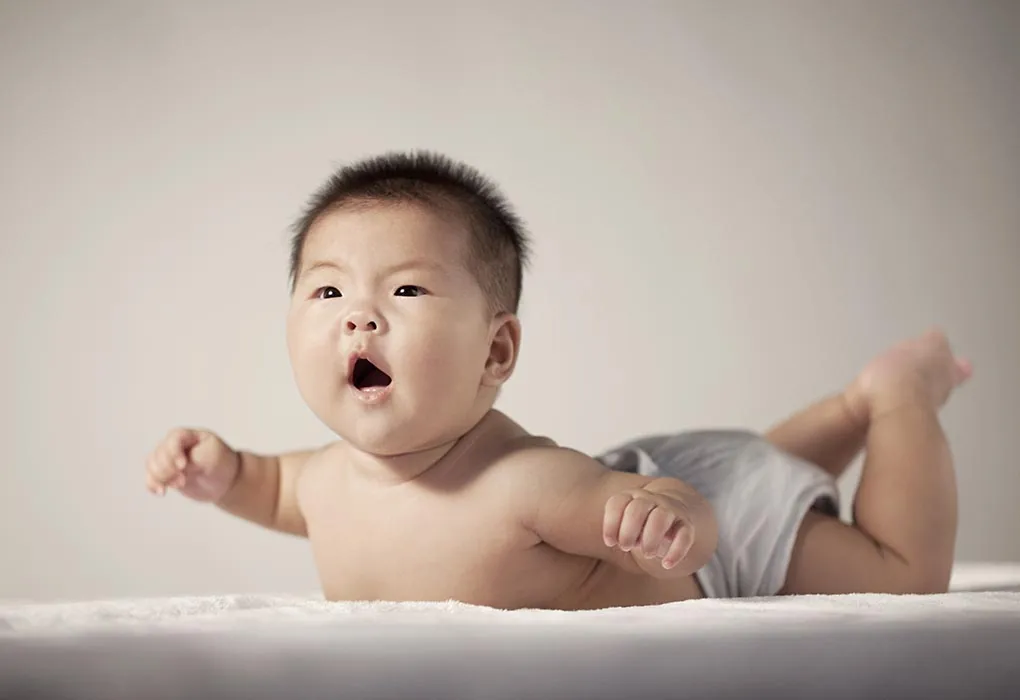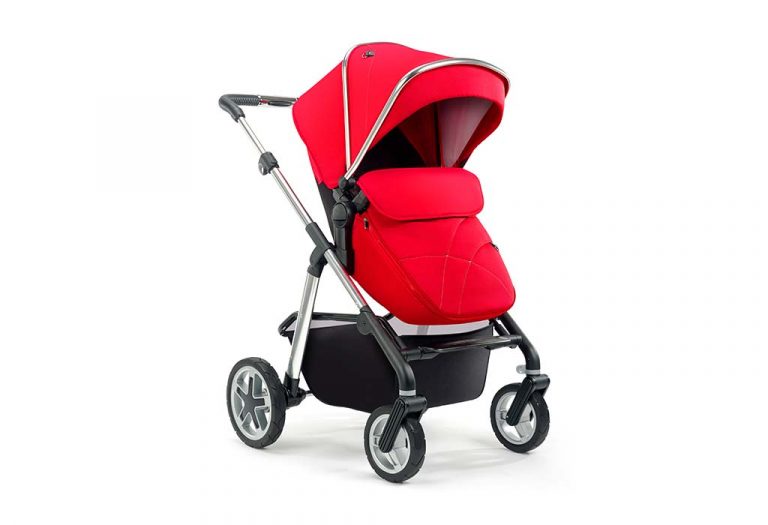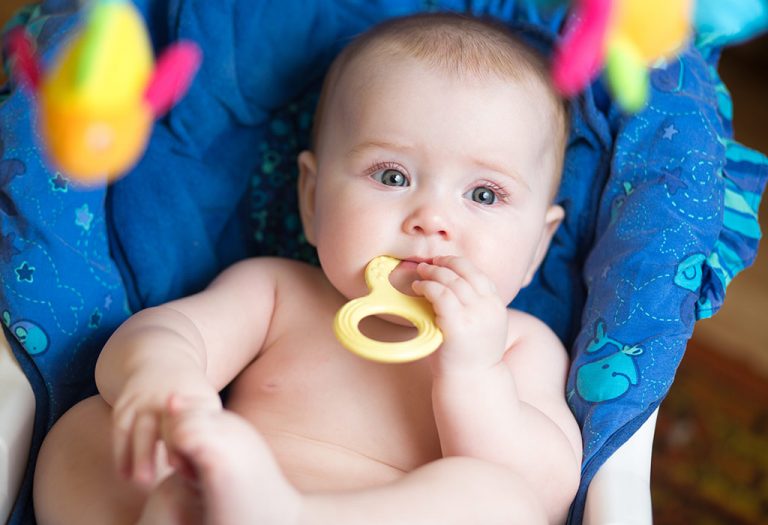Understanding the Parachute Reflex in Babies

Reflex actions in babies are important signs that indicate their nervous systems are developing. These reflexes usually happen in the first few months and slowly stop once their brains become more mature. Common reflexes include stepping, suckling and parachute. Although infant parachute reflex is not a common term you usually read about, it is something worth learning about if you want to stay updated on all things about babies and parenting. This article aims to provide readers with some information about parachute reflexes. Let’s first know what it actually is and about other important reflexes.
What Is a Parachute Reflex?
The parachute reflex in newborns is a motor response they develop around the age of 5 months. You can see this response when you hold the baby in a straight position and quickly turn him over, facing downwards (as if falling). He will extend his arms to break the fall. This action is the parachute reflex and usually remains with a human being his entire life.
Why Do Infants Have a Parachute Reflex?
The parachute reflex is a primitive response, controlled by the central nervous system as a mode of survival (1). Primitive reflexes begin in the mother’s womb and hence are developed by the action of the outside world stimuli. They are usually involuntary and fade with time.
How to Determine Parachute Reflex in Infants?
Visit your baby’s doctor each month and consult with him. That is the best way to check whether your little one has developed the parachute reflex. You can also check for these reactions:
- Slowly put your child down on the floor where his body and his feet can come to rest. If you see his arms immediately extending and his legs slightly rotating, he has developed the parachute reflex. You can see this when your baby is 5 months old.
- If your child stumbles forward and you see his arms extend ahead to protect his body from harm, then this is a frontal parachute reflex. You can see this in babies between 7 to 9 months of age (2).
- Make your child sit with his legs hanging down. Gently push him to one side. A lateral parachute reflex can be seen if he spreads his arm to prevent himself from falling. You can see this in babies who are around 6 months old.
- If you push your child backwards and his shoulders tilt back with his wrists and arms extended, then this is another protective parachute reflex.
Taking note of all these reflexes in your child can give you a better idea of how his nervous system and motor skills are developing.
Other Reflexes
Yes, there are several primitive reflexes other than a parachute reflex in newborn babies. Let’s discover them one by one in brief (3):
1. Rooting Reflex
When you gently stroke a baby’s cheek or jaw or touch the corner of their mouth, they will turn their head in that direction. This helps them find the breast or bottle to begin feeding. This reflex is present from birth and fades by four months of age.
2. Snout Reflex
When the upper lip is tapped lightly, the muscles around the mouth contract, resembling a snout (4).
3. Moro Reflex
Known as the startle reflex, this reflex causes a baby to arch their back, throw out their arms and legs, and then quickly bring their arms together while crying when they hear any sudden movement or loud noise. It appears in the first few weeks of life and disappears in two months.
4. Grasp Reflex
When a baby’s palm is touched, they instinctively close their fingers to form a fist. This allows them to grasp objects. This reflex usually diminishes by five to six months. The plantar grasp, where toes curl when the sole is stroked, may last up to 12 months (4).
5. Suck Reflex
This reflex, developing around the 32nd week of pregnancy and fully formed by the 36th week, enables a baby to suck when the roof of their mouth is touched. Babies refine this reflex alongside the rooting reflex, allowing them to suck on pacifiers, fingers, or hands to self-soothe.
6. Stepping Reflex
Also called the walking or dance reflex, this makes a baby move their legs as if walking when held upright with their feet touching a flat surface. It is present at birth and fades by two months, returning around 12 months as voluntary walking.
7. Tonic Neck Reflex
When a baby’s head turns to one side, the arm on that side straightens, and the opposite arm bends, resembling a fencing posture. This reflex typically fades between five and seven months of age.
8. Galant Reflex (Truncal Incurvation)
This occurs when the side of a baby’s spine is stroked while they are lying face down. The baby will curve their hips toward the side that was touched, making a slight twitching motion (5).
How Long Do Babies Have the Parachute Reflex?
Babies will start to develop parachute reflexes around 6 to 8 months of age. These reflexes remain with them throughout their life as it is a protective survival mechanism.
What If There Is Absence of Multiple Reflexes in a Baby?
When you do not observe any reflexes in your little one, maybe it is a sign that he is suffering from an injury to the nervous system or a weakness in his motor skills. You can check for the absence of multiple reflexes by observing the following:
- The absence of coordination, resulting in less muscle tone. This can be seen when your baby crashes into objects and falls sideways.
- Difficulty in paying attention or focusing on something, like when watching TV. This can usually manifest as a learning disorder by the time your child is in school.
- Inability to sit up, and you see your baby perpetually lying down.
- When your baby is unable to be potty trained.
- When your baby has a hard time to do something with his hands, like eat. This shows lack of finer motor skills.
- When your baby is always scared or dependent.
If you see these actions constantly in your baby, take him to the paediatrician soon. The paediatrician can start therapies targeted to the development of these multiple reflexes in your baby. A good way is to include movements and games in your baby’s everyday life, which can induce the involuntary reflexes automatically. These can be done in accordance with the child’s age and stage of development.
FAQs
1. Why are infant reflexes so important?
Reflexes indicate the proper functioning of the nervous system. In fact, newborn reflexes like sucking reflex or root reflex help babies survive and thrive in the new environment. Therefore, it is imperative to say that primitive reflexes in newborns help babies achieve their milestones (5).
2. What if primitive reflexes in babies don’t go away?
If primitive reflexes stay longer than normal period, they can hinder a child’s growth and development, including physical and social. Retained primitive reflexes indicate central nervous system problems in babies (6).
The presence of parachute reflexes in your baby shows that his nervous system and motor skills are on the right path of development. Watch out and be aware so that you can keep a check on your little one’s health while he is growing up.
References/Resources:
1. Romeo. D. M, Cioni. M, et al.; Development of the forward parachute reaction and the age of walking in near term infants: a longitudinal observational study. BMC Pediatr.; PubMed Central; https://www.ncbi.nlm.nih.gov/pmc/articles/PMC2653025/; February 2009
2. 6 Months; PediNeurologic Exam; https://neurologicexam.med.utah.edu/pediatric/html/06month.html#14
3. Newborn Reflexes; American Academy of Pediatrics; https://www.healthychildren.org/English/ages-stages/baby/Pages/Newborn-Reflexes.aspx
4. Walker. H. K; Chapter 71 The Suck, Snout, Palmomental, and Grasp Reflexes; Clinical Methods: The History, Physical, and Laboratory Examinations. 3rd edition; https://www.ncbi.nlm.nih.gov/books/NBK395/; 1990
5. Infant reflexes; MedlinePlus; https://medlineplus.gov/ency/article/003292.htm
6. Gieysztor. E. Z, Choińska. A. M, Paprocka-Borowicz. M; Persistence of primitive reflexes and associated motor problems in healthy preschool children; Arch Med Sci.; PubMed Central; https://www.ncbi.nlm.nih.gov/pmc/articles/PMC5778413/; January 2018
Also Read:
Newborn Baby Reflexes
Stepping Reflex in Babies
Understanding Rooting Reflex in Babies
Importance of Extrusion Reflex in Babies
Was This Article Helpful?
Parenting is a huge responsibility, for you as a caregiver, but also for us as a parenting content platform. We understand that and take our responsibility of creating credible content seriously. FirstCry Parenting articles are written and published only after extensive research using factually sound references to deliver quality content that is accurate, validated by experts, and completely reliable. To understand how we go about creating content that is credible, read our editorial policy here.
























